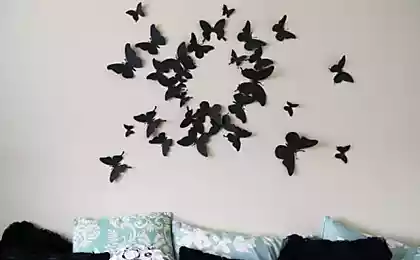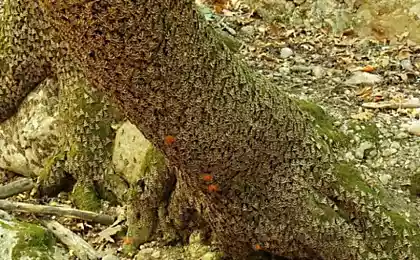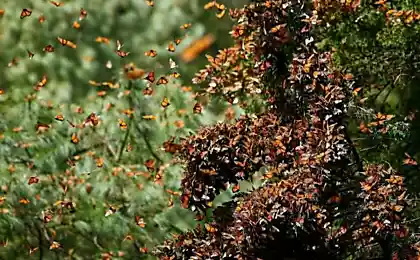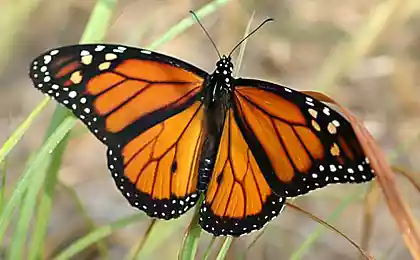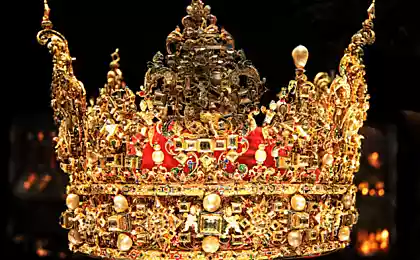1304
The birth of the king of butterflies
We offer an excellent selection of photos consistent, just fabulous appearance of one of the most beautiful and popular butterfly world - the monarch. At the end of the last century, this insect is even nominated for the US symbol.
So, let's begin. The main "tool" for the appearance of the monarch butterfly is a plant as milkweed.
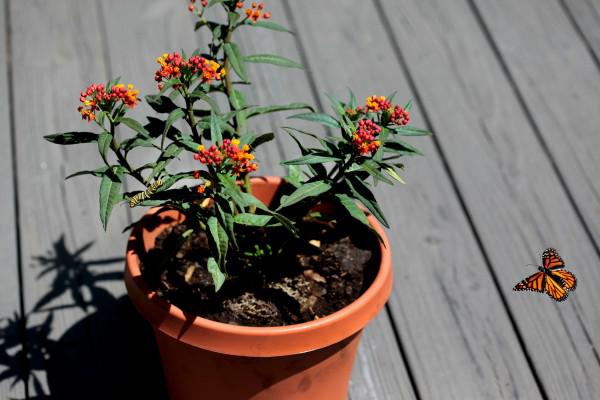
The female butterfly lays its short life of several hundreds of eggs, each of which weighs about 0, 46 milligrams.
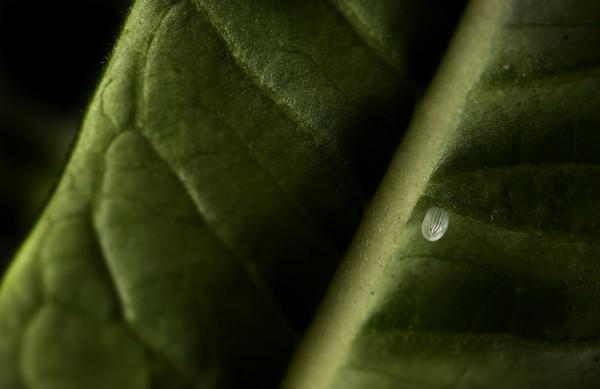
Larvae hatch in 3-4 days, first eating shell eggs, and then moving on milkweed.
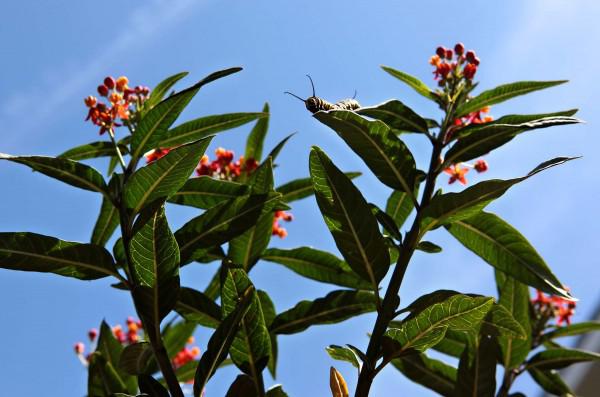
The caterpillar lives for about two weeks.

This period of "Jora" from eating the stems, leaves and flowers milkweed.

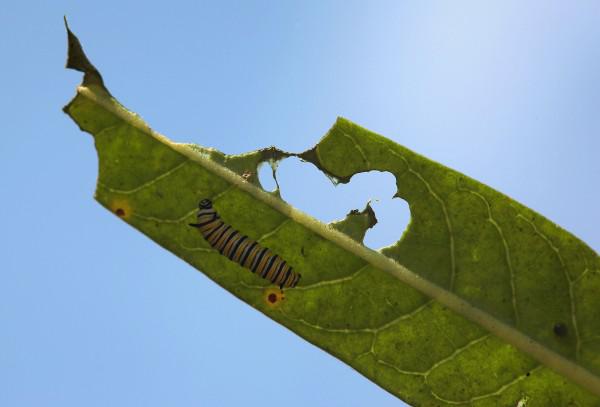
Caterpillar is stored with all necessary materials for the dolls.
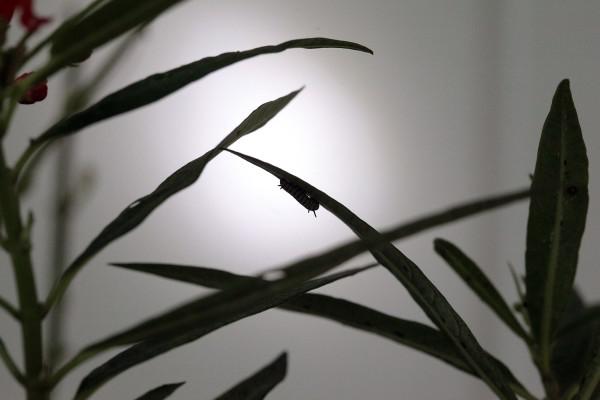
The larvae of the monarch's toxic, but safe for humans.
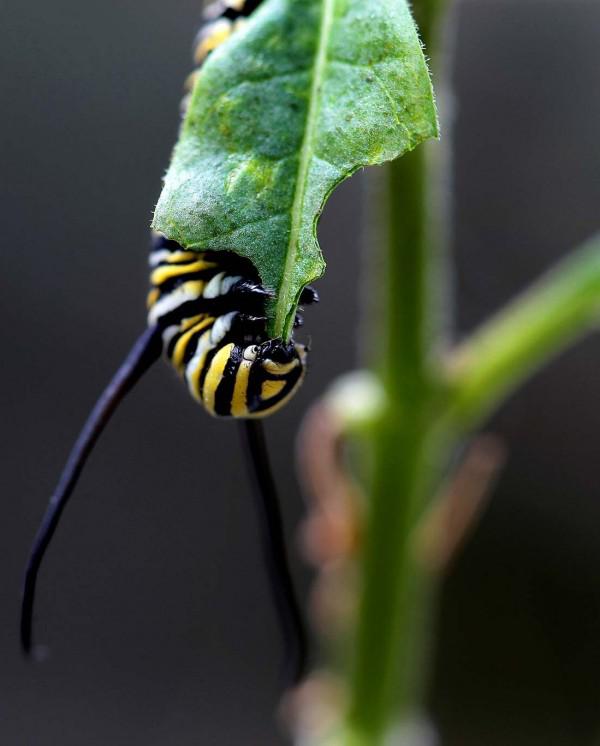
Chemicals that caterpillars consume milkweed from, protect them from attacks on life in the face of predators: frogs, lizards, birds, etc.
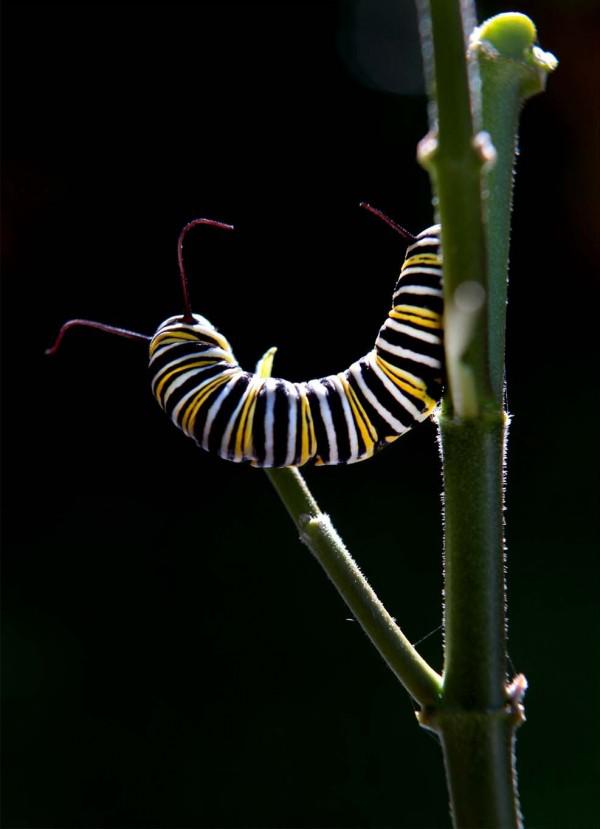
If you want to draw the attention of the monarchs, you'll need more than one milkweed bush in the yard.
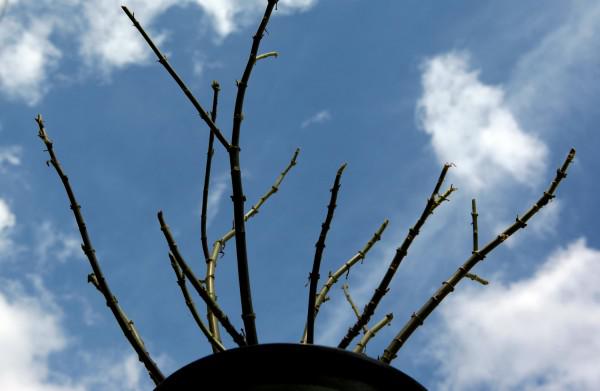
Caterpillar is looking for any suitable object to hide.
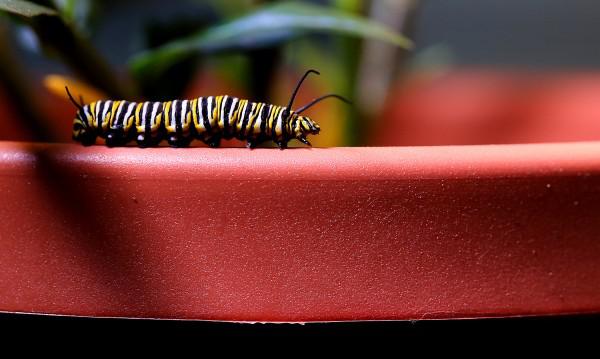
That such acrobatics with just one pair prolegs. Vis down :)
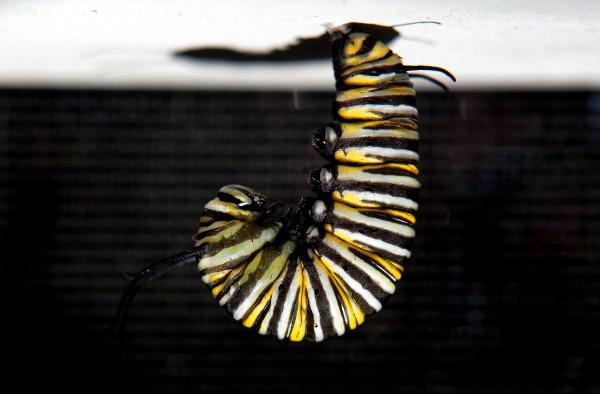
Form J is customary for the caterpillars before molting.
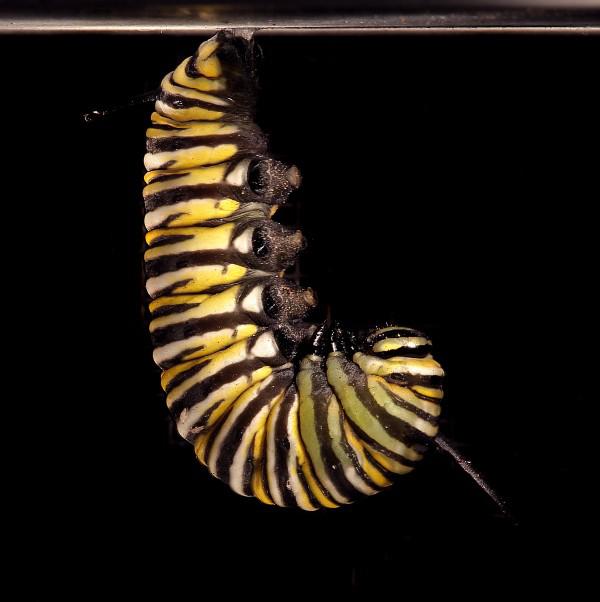
Molting is accompanied by the creation of a green exoskeleton.
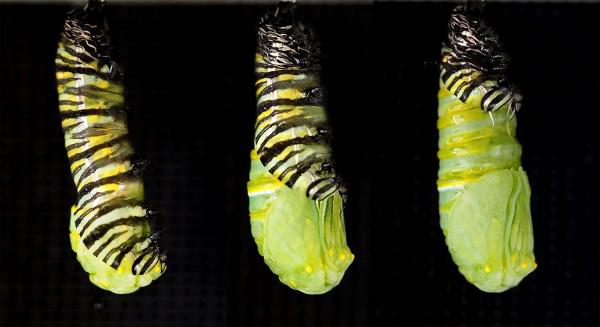
At this point comes the very unique metamorphosis, accompanied by hormonal changes that lead to the appearance of butterflies.
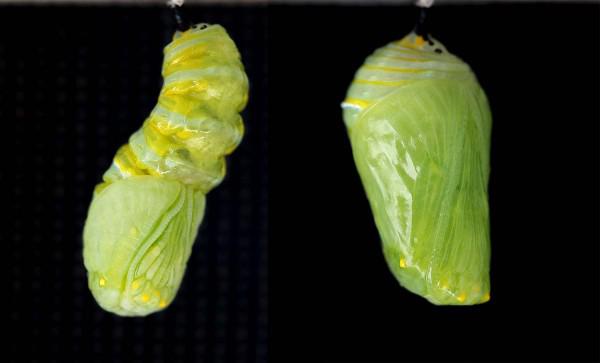
Dolly begins to darken and the exoskeleton becomes transparent.
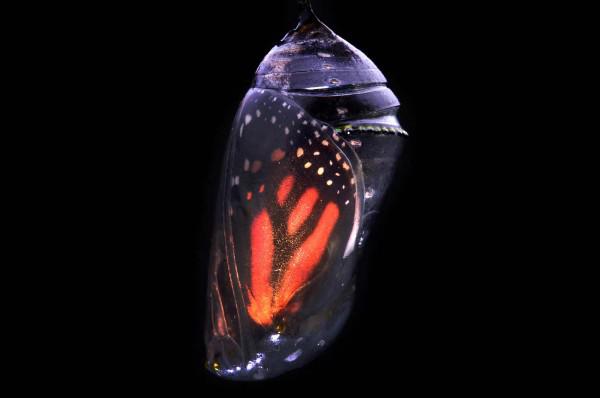
Mature butterflies appear about two weeks after the start of pupation.
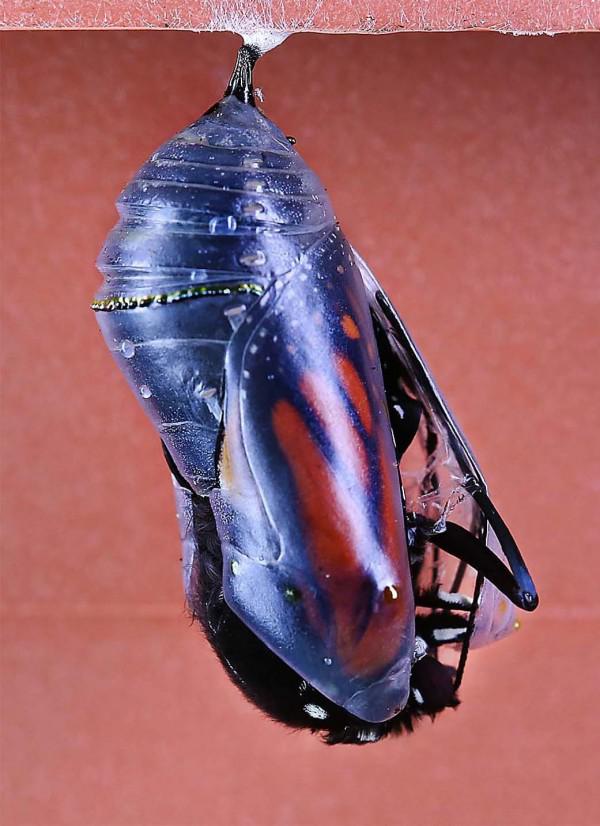
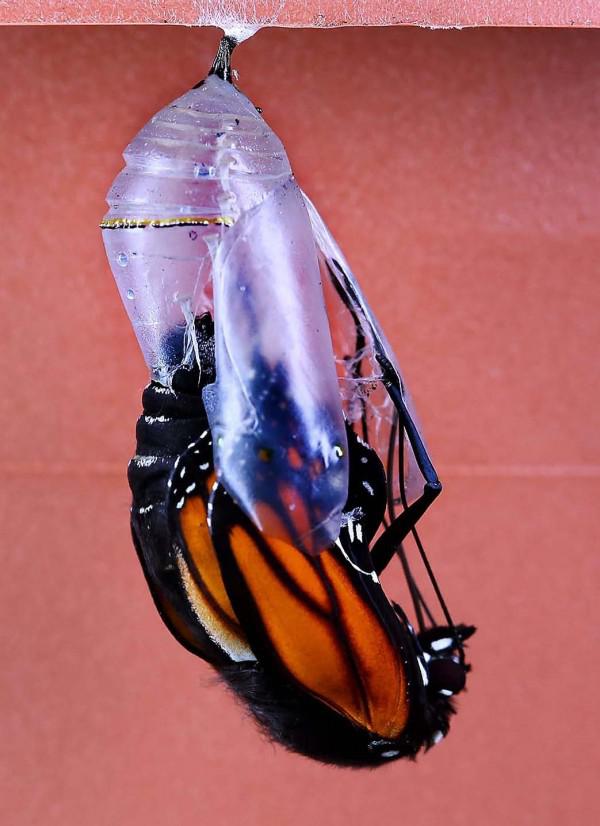
After his release from the "shackles" butterfly hanging for several hours, waiting for the wings will be ready.
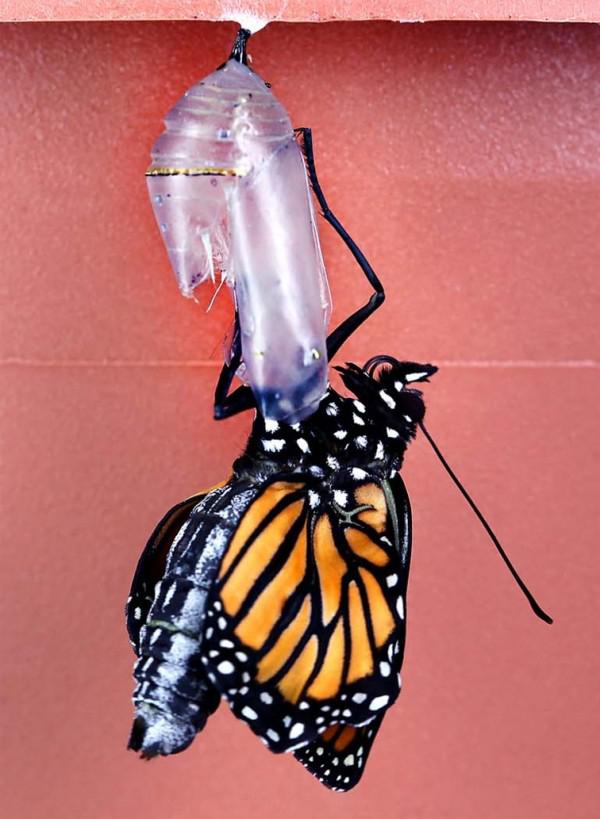
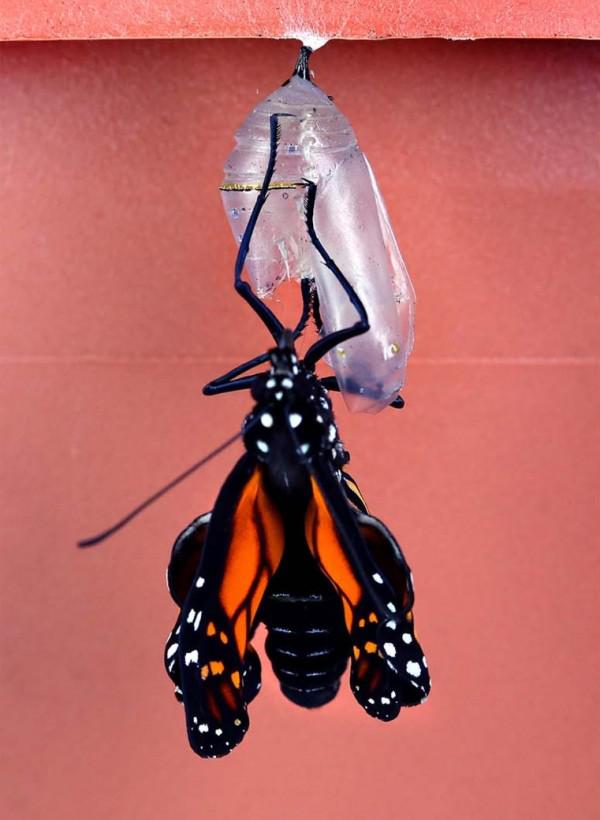
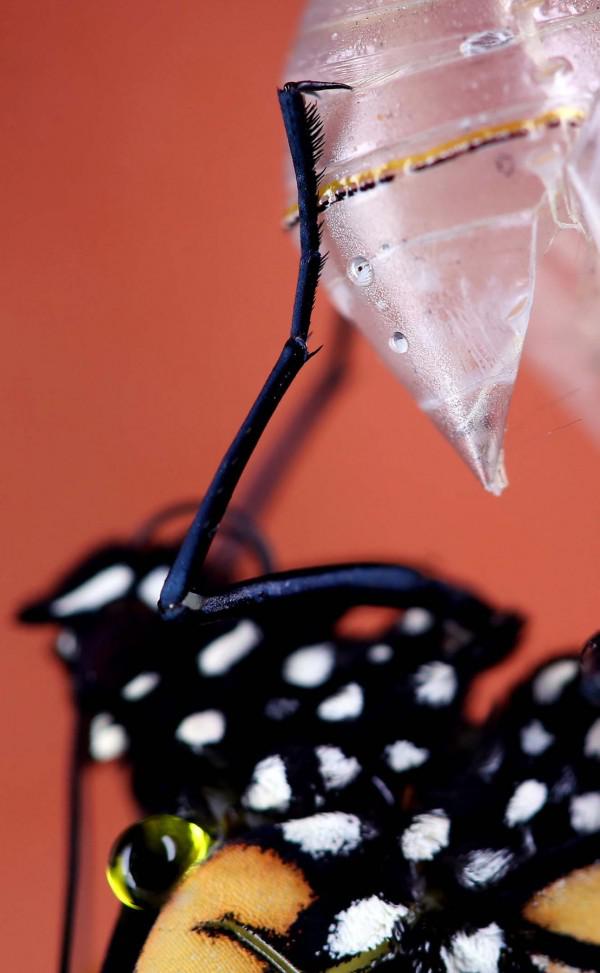
As she hangs corrugated wings fill with fluid and become dense.
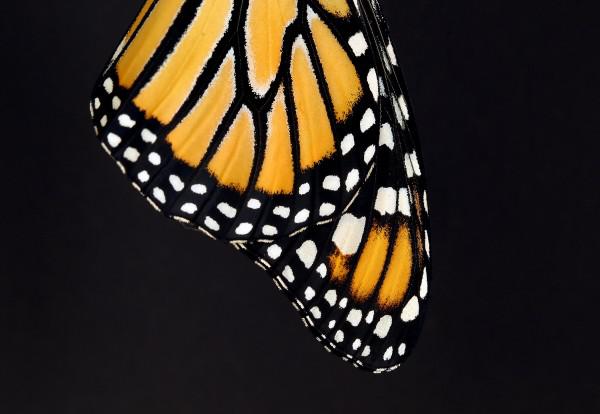
Freed from the pupae in the morning, evening, the monarch can already fly.

Although the caterpillars eat only milkweed. Do butterflies have no such prejudices. It collects pollen in many colors.
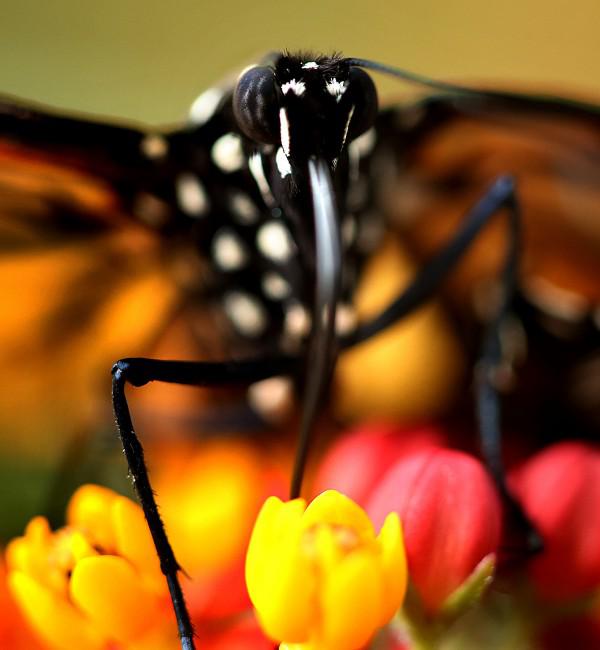
Adult butterfly (imago) can live from two to eight weeks. Unfortunately, in the territory of the European data Votochnoy insects appear only during their long migrations.

Males and females are fairly easy to distinguish. At first, the rear wing on the black spot in the middle of one of the veins.
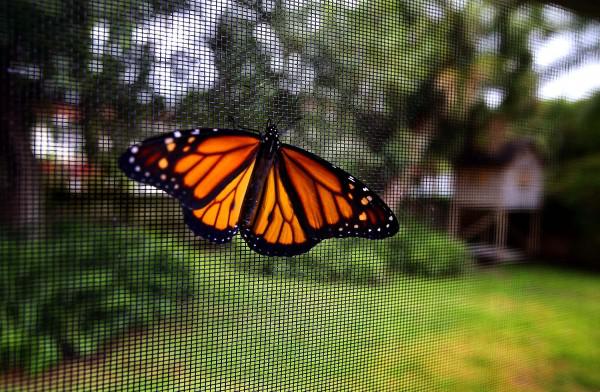
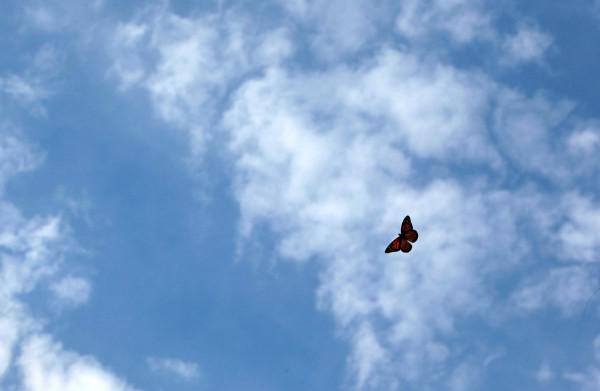
Photo by Greg Lovett
So, let's begin. The main "tool" for the appearance of the monarch butterfly is a plant as milkweed.

The female butterfly lays its short life of several hundreds of eggs, each of which weighs about 0, 46 milligrams.

Larvae hatch in 3-4 days, first eating shell eggs, and then moving on milkweed.

The caterpillar lives for about two weeks.

This period of "Jora" from eating the stems, leaves and flowers milkweed.


Caterpillar is stored with all necessary materials for the dolls.

The larvae of the monarch's toxic, but safe for humans.

Chemicals that caterpillars consume milkweed from, protect them from attacks on life in the face of predators: frogs, lizards, birds, etc.

If you want to draw the attention of the monarchs, you'll need more than one milkweed bush in the yard.

Caterpillar is looking for any suitable object to hide.

That such acrobatics with just one pair prolegs. Vis down :)

Form J is customary for the caterpillars before molting.

Molting is accompanied by the creation of a green exoskeleton.

At this point comes the very unique metamorphosis, accompanied by hormonal changes that lead to the appearance of butterflies.

Dolly begins to darken and the exoskeleton becomes transparent.

Mature butterflies appear about two weeks after the start of pupation.


After his release from the "shackles" butterfly hanging for several hours, waiting for the wings will be ready.



As she hangs corrugated wings fill with fluid and become dense.

Freed from the pupae in the morning, evening, the monarch can already fly.

Although the caterpillars eat only milkweed. Do butterflies have no such prejudices. It collects pollen in many colors.

Adult butterfly (imago) can live from two to eight weeks. Unfortunately, in the territory of the European data Votochnoy insects appear only during their long migrations.

Males and females are fairly easy to distinguish. At first, the rear wing on the black spot in the middle of one of the veins.


Photo by Greg Lovett
Hereditary photographer Philippe St Lodi (Philippe Sainte-Laudy)
Street art from Nizhny Novgorod from Nikita Nomerz

